10 Intrinsic Hemolysis
Cause
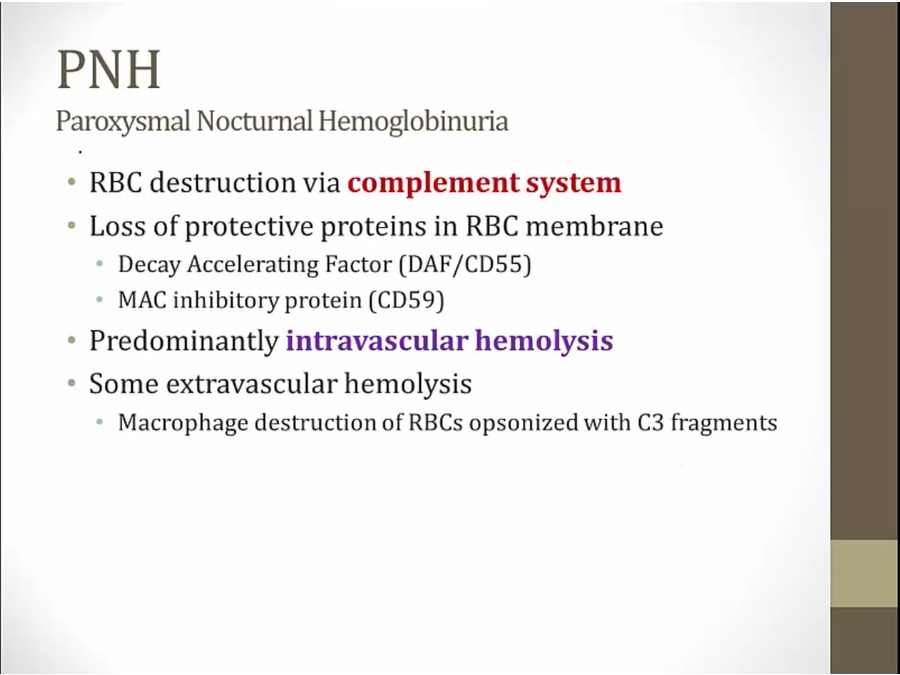
- normally complement does not lyse RBC
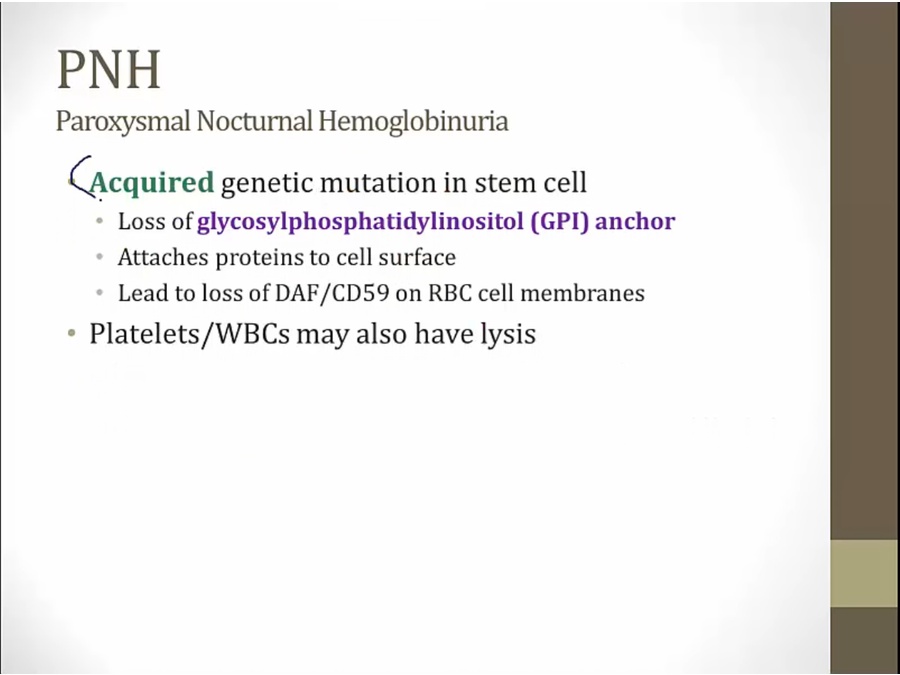
- acquired: genetic mutation some point in life
- GPI: anchors that attach DAF/CD59 to membrane
- stem cell: RBC, platelets, WBC also involved
Pathogenesis, Symptoms
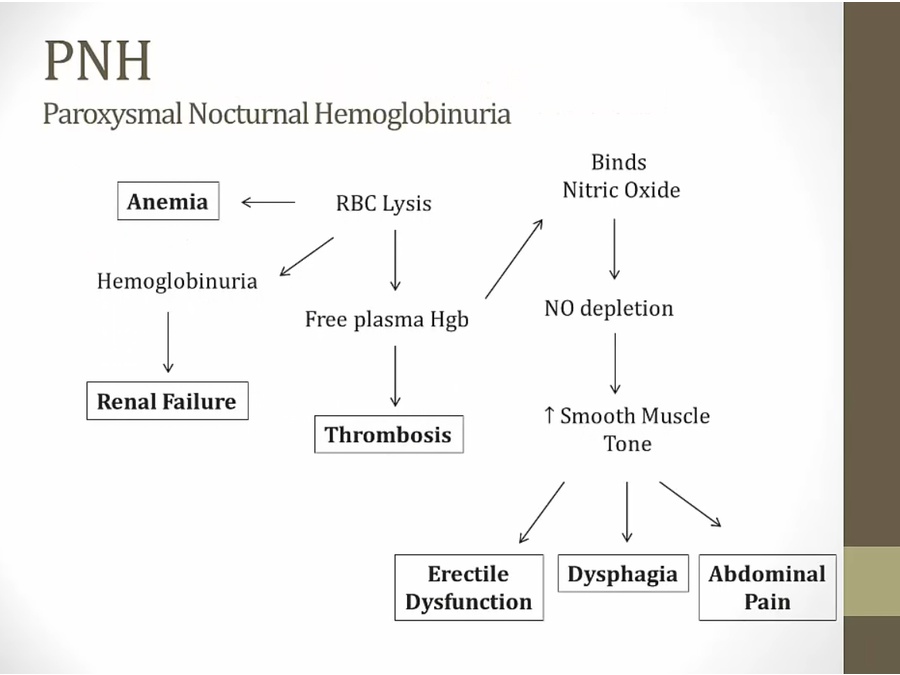
- Free plasma Hgb thrombogenic, thrombosis
- platelets lysed: spill granules
- Priapism: sustained prolonged erection
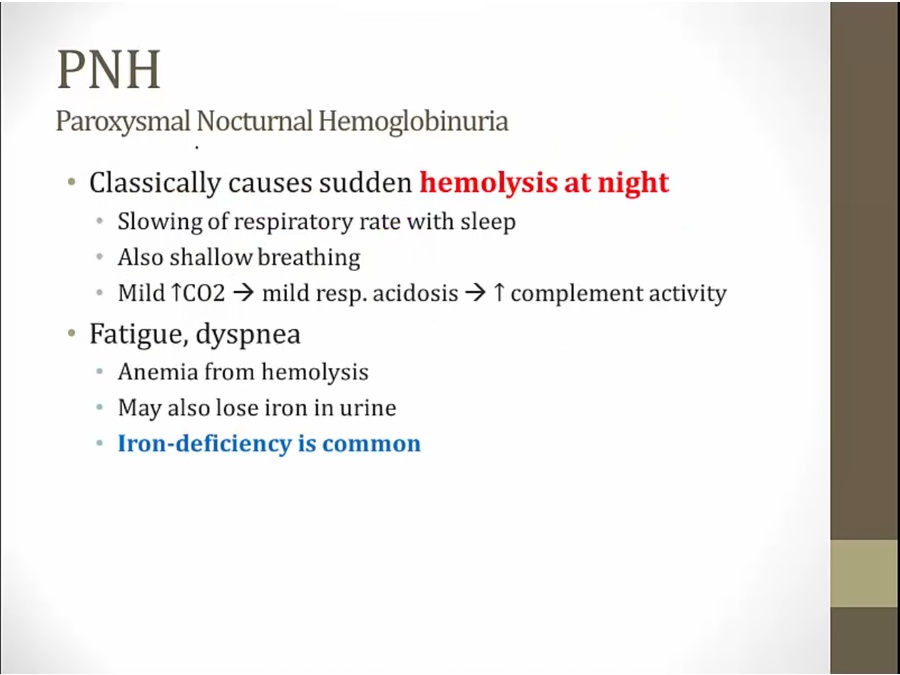
- paroxysmal: sudden
- episodes at night when urine changes color
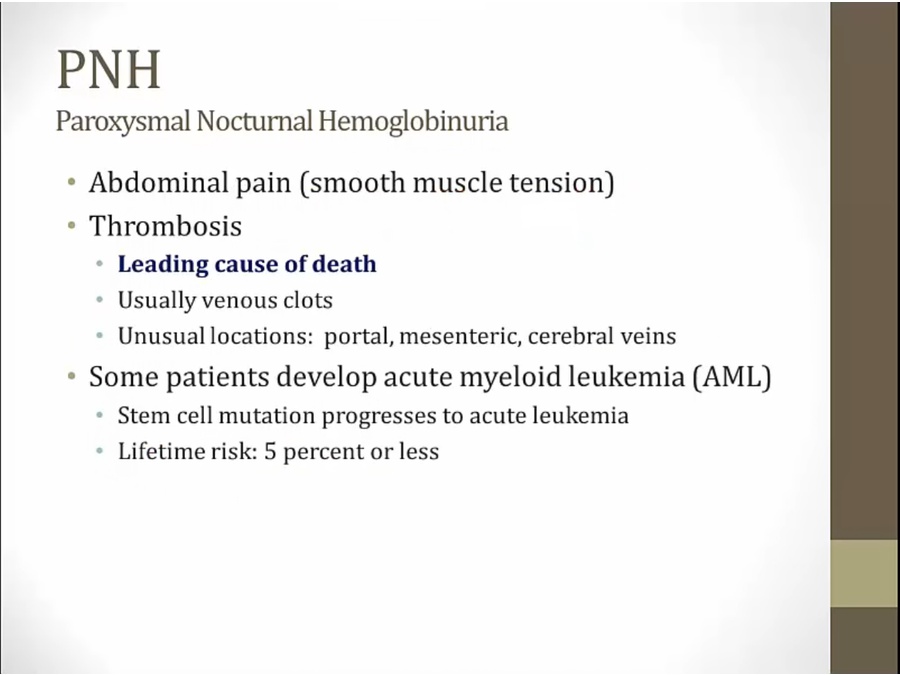
Diagnosis, treatment
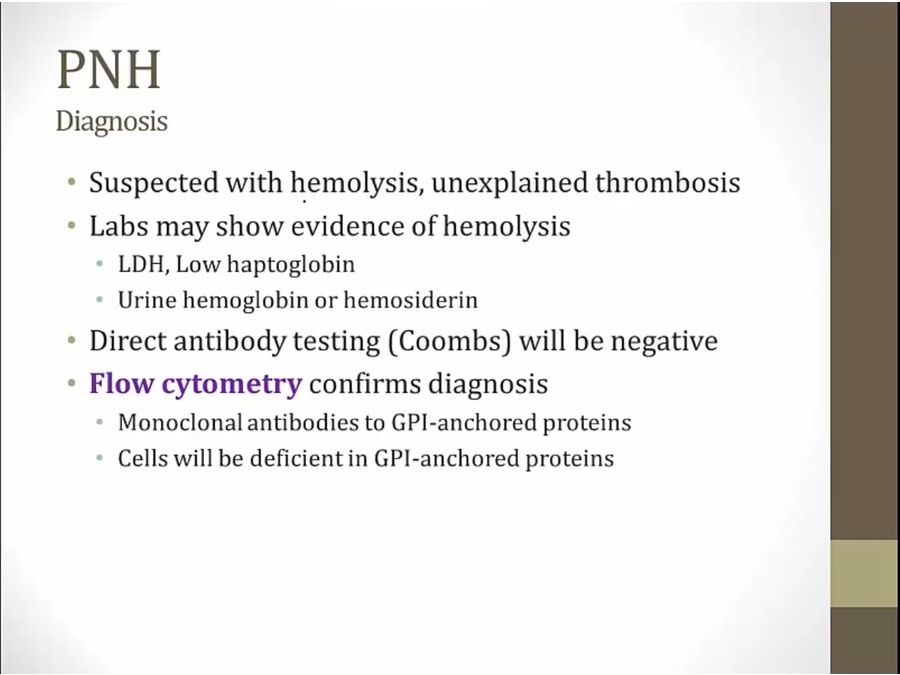
- antibodies not part of problem
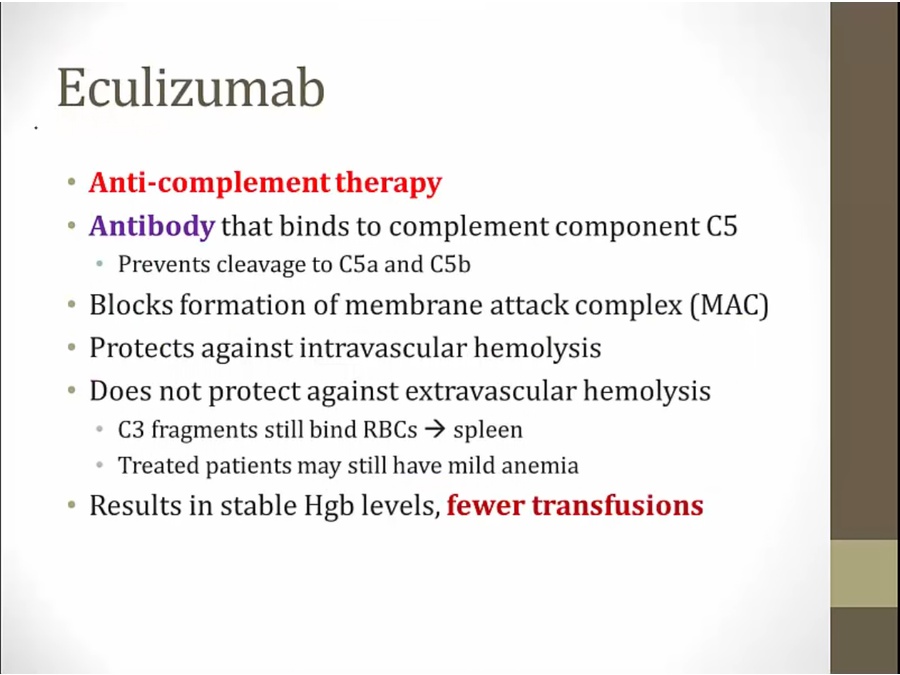
Pyruvate Kinase Deficiency
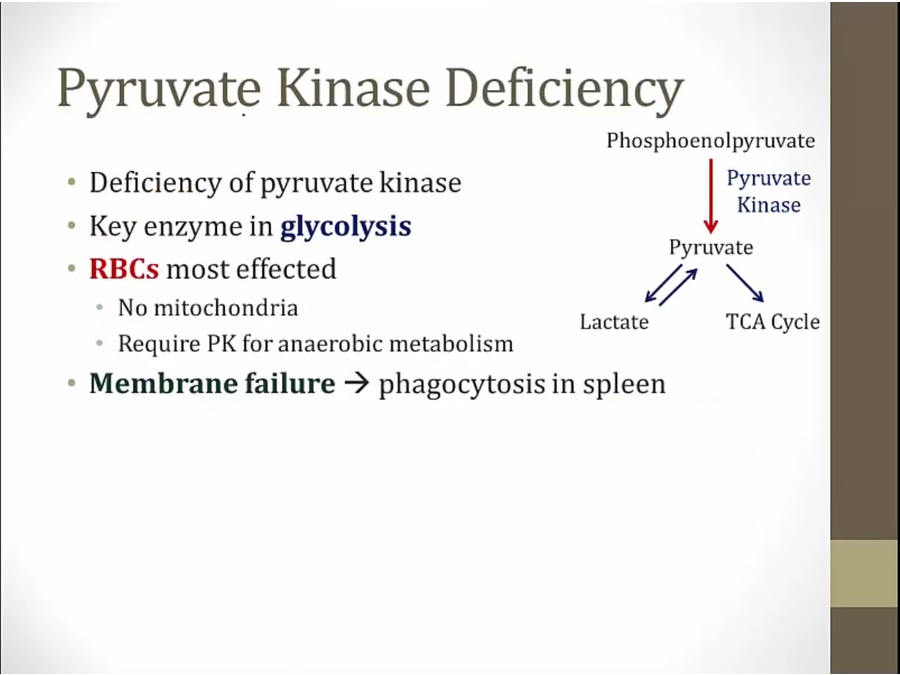
- when levels low, RBC most affected (require pyruvate kinase and glycolysis for anerobic)
- no ATP, membrane fails
- when problem with membrane, eaten in spleen
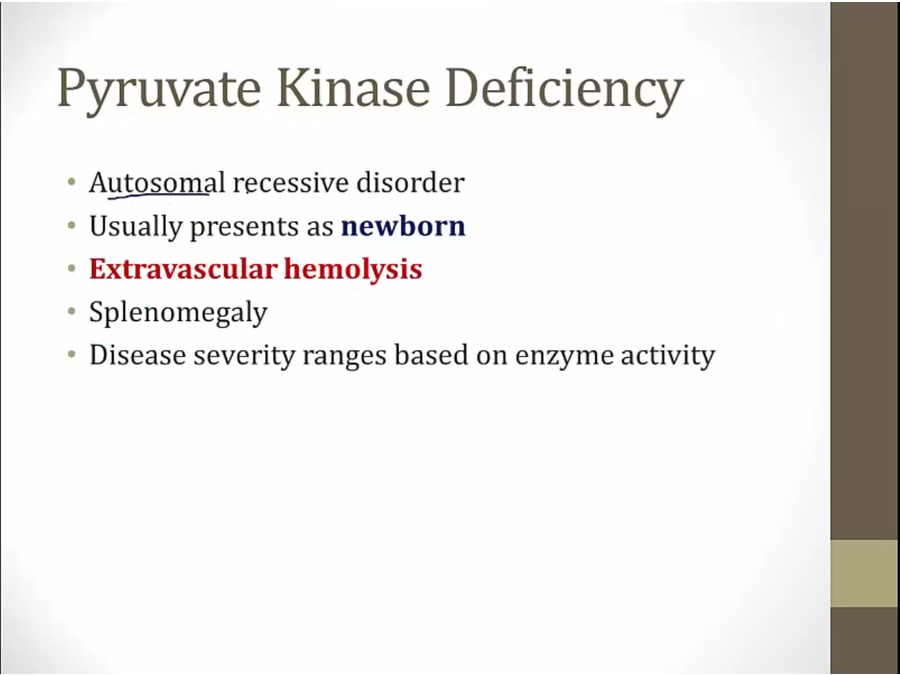
- disease severity based on how low enzyme activity is
G6PD Deficiency
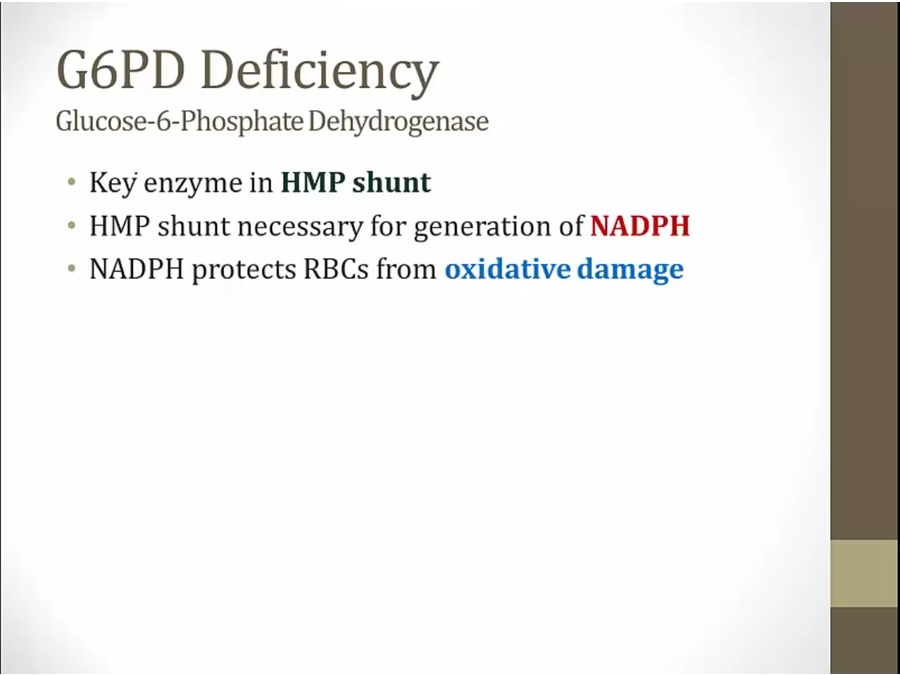
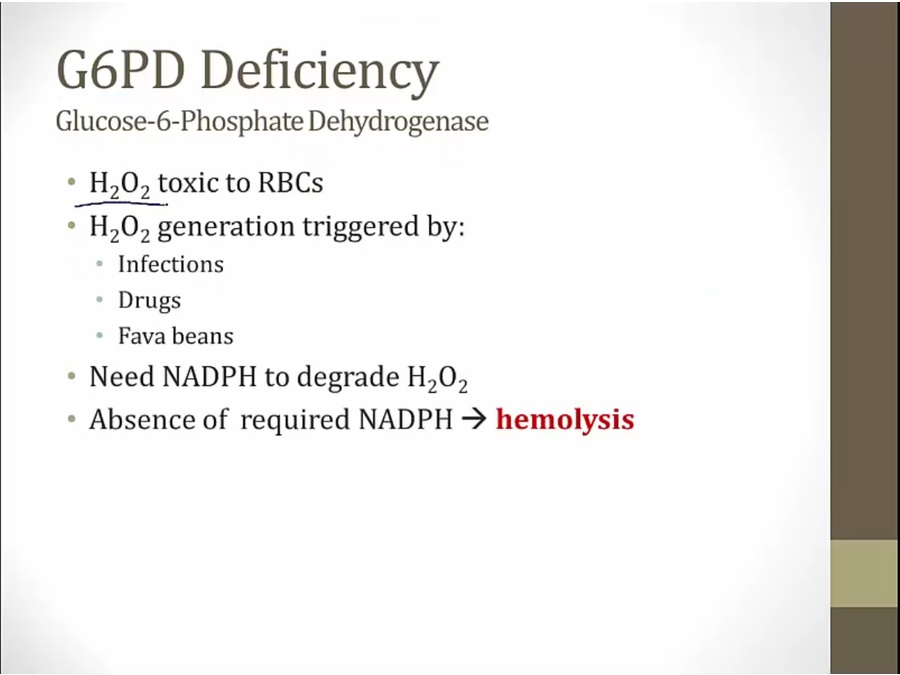
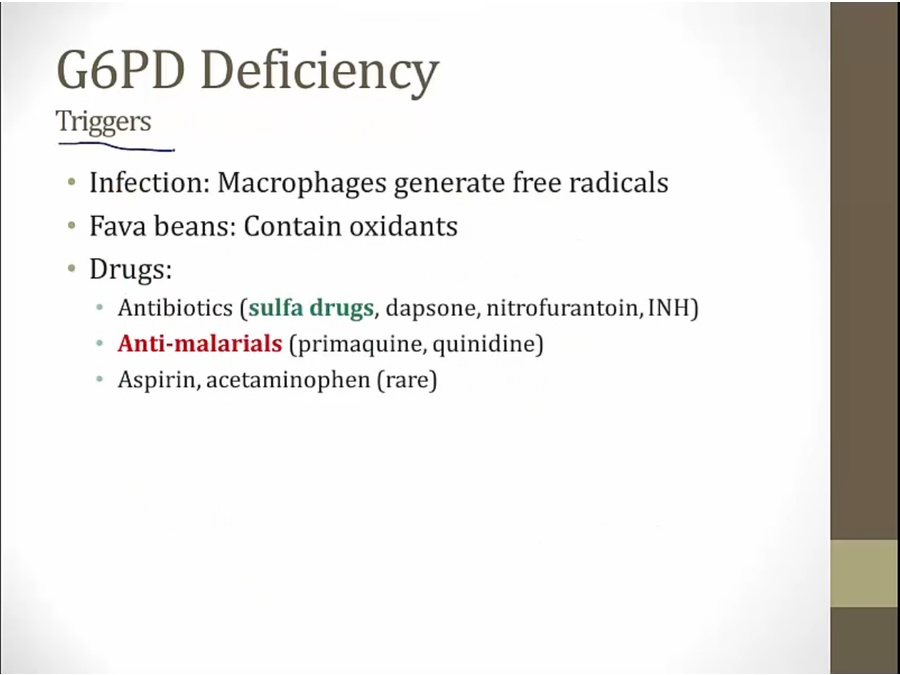
- antimalarials can trigger hemolysis
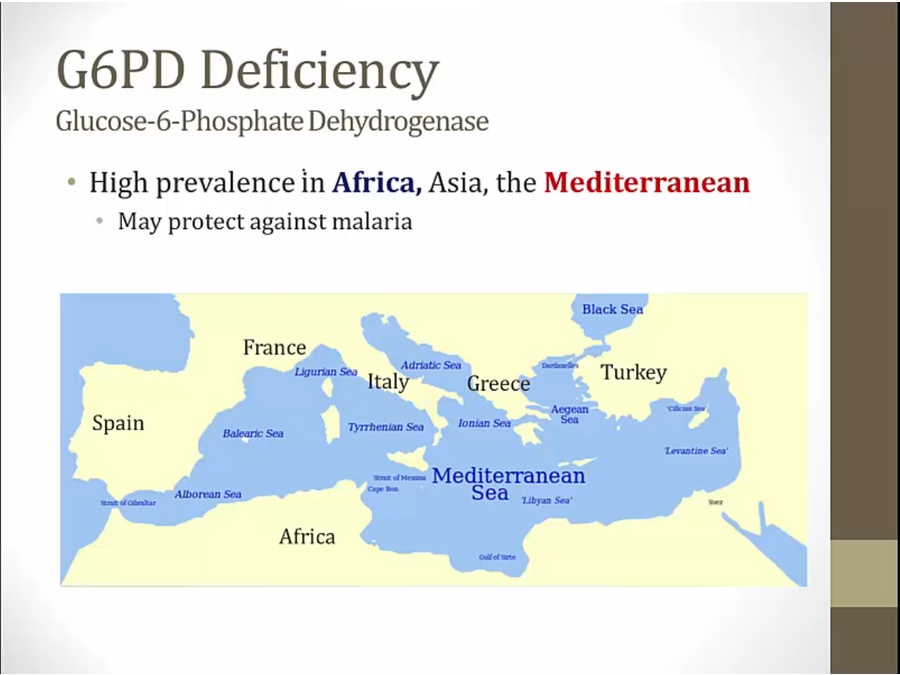
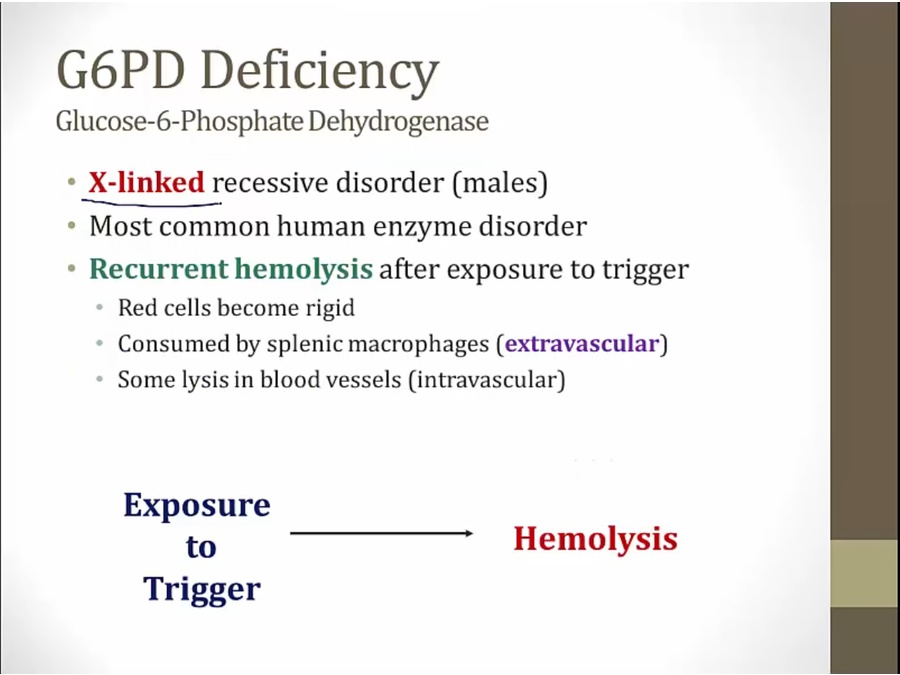
- Can’t make ATP, RBC become rigid, cannot maintain membrane
- most extravascular
- some become so damaged/rigid: intravascular
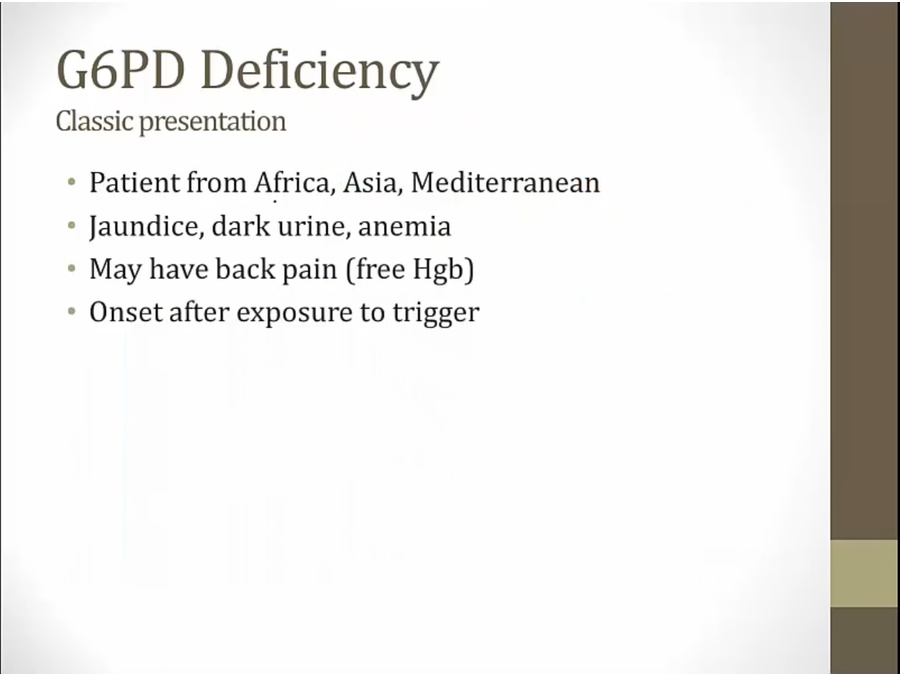

- Bite and seeds: bite cells and Heinz bodies seen in RBCs
- Broken G6PD-free fruit: hemolytic anemia in G6PD deficiency
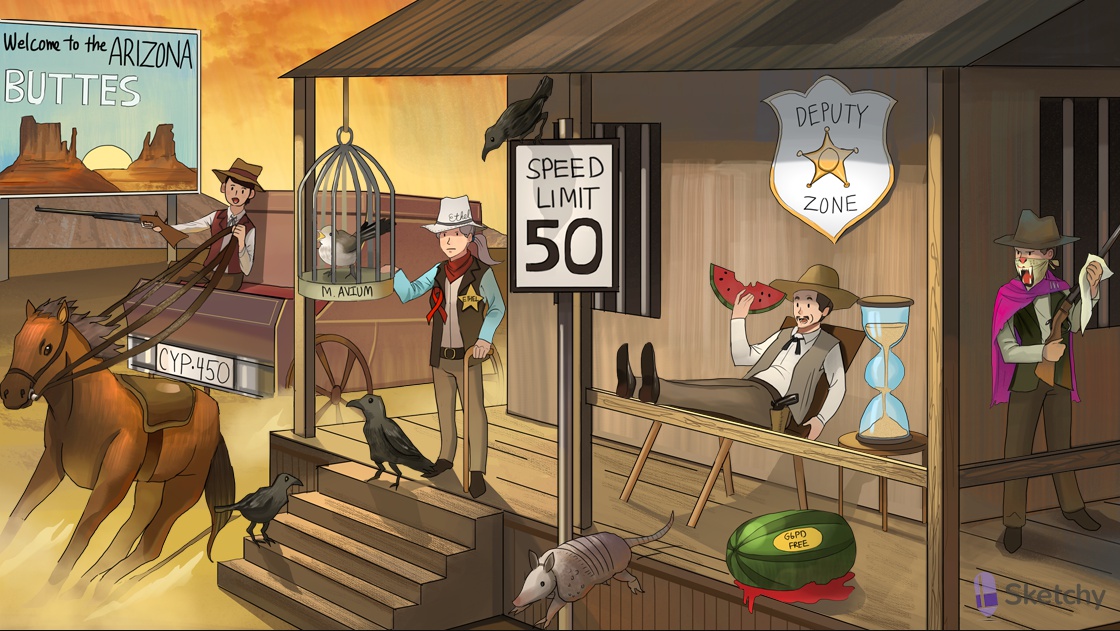
- Bite and seeds: bite cells and Heinz bodies seen in RBCs
- Broken G6PD-free fruit: dapsone can cause hemolytic anemia in G6PD deficiency
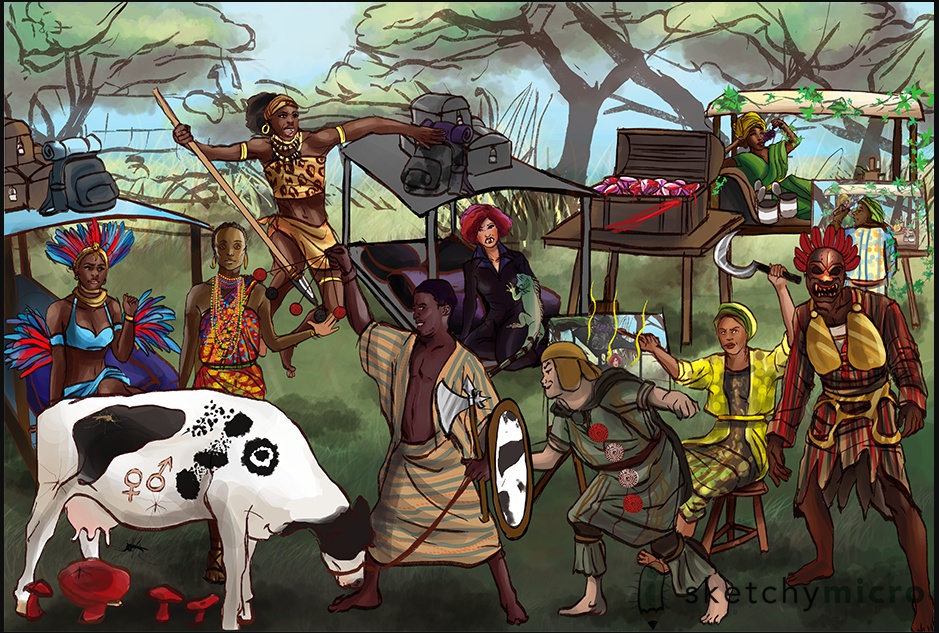
- “Color queen” - chloroquine, beads join together as polymer, blocking plasmodium heme polymerase. High resistance
- “Primal queen” - primaquine, can cause anemia in G6PD deficiency
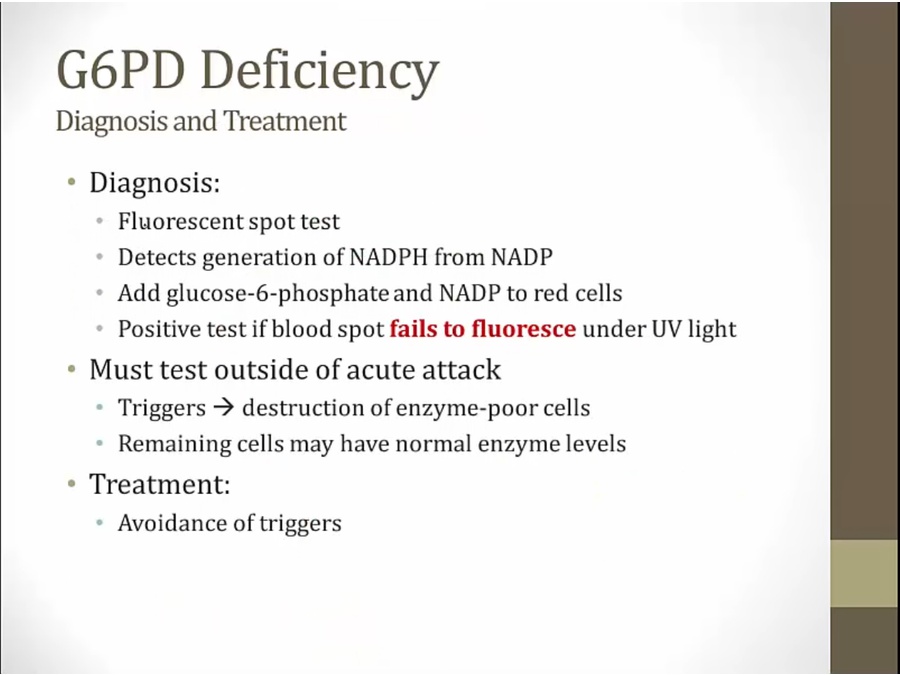
- fluorescent spot: screening test
- pts unable to generate NADPH
- normal: generate NADPH, fluoresce
- must test when not having acute attack
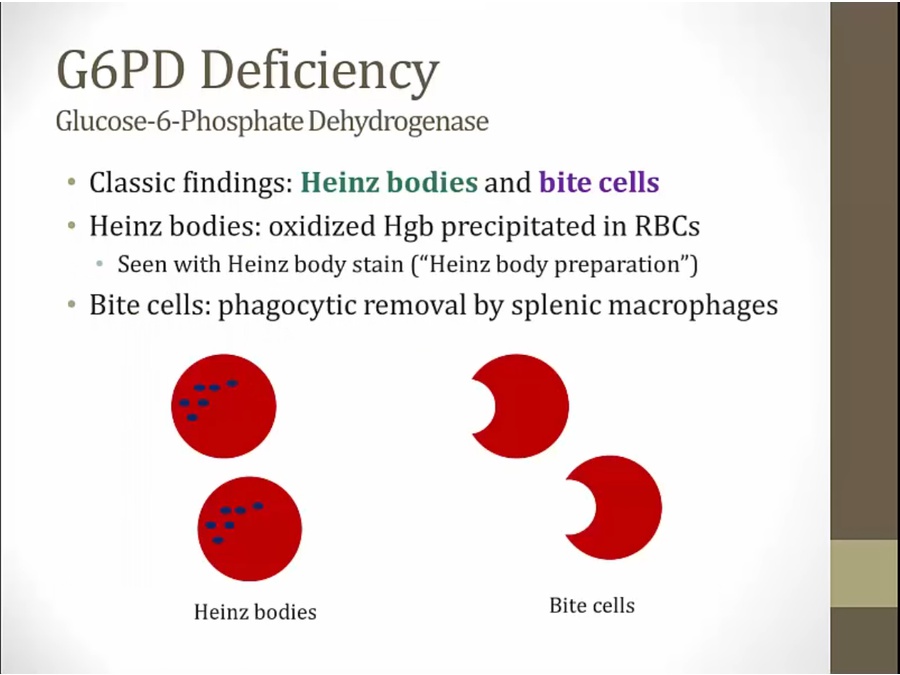
Hereditary Spherocytosis
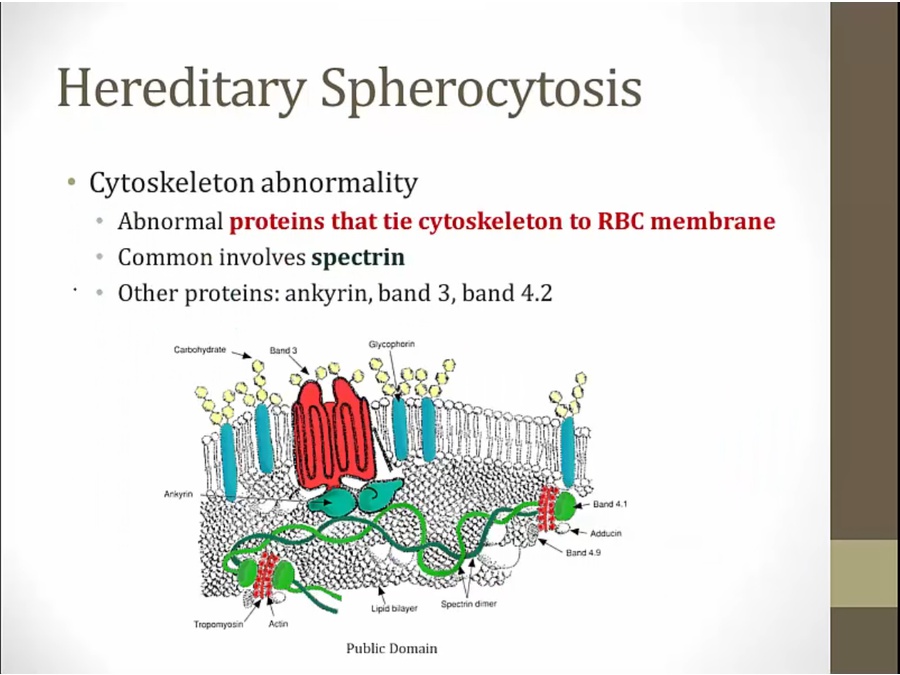
- proteins give RBC biconcave shape and flexibility
- abnormal: rigid membrane
- spectrin for spherocytosis
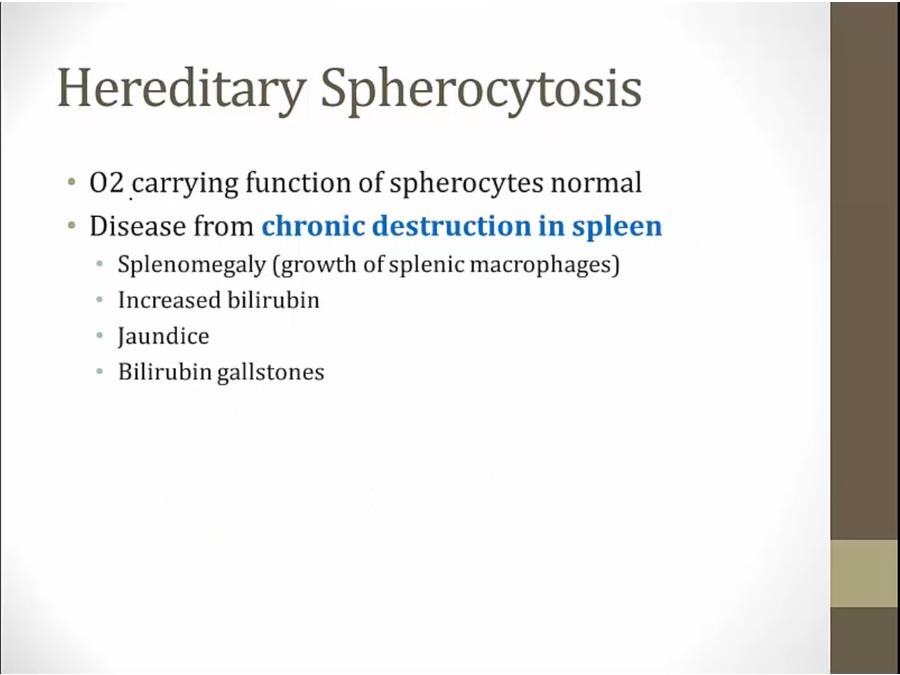
- problem lies in chronic extravascular hemolysis, not O2 carrying capacity
Diagnosis
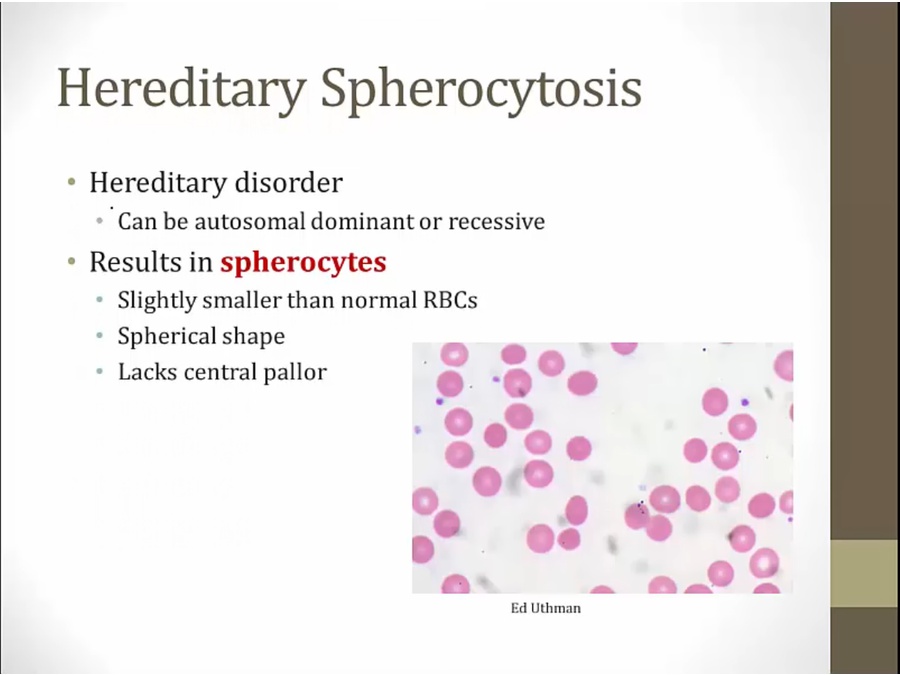
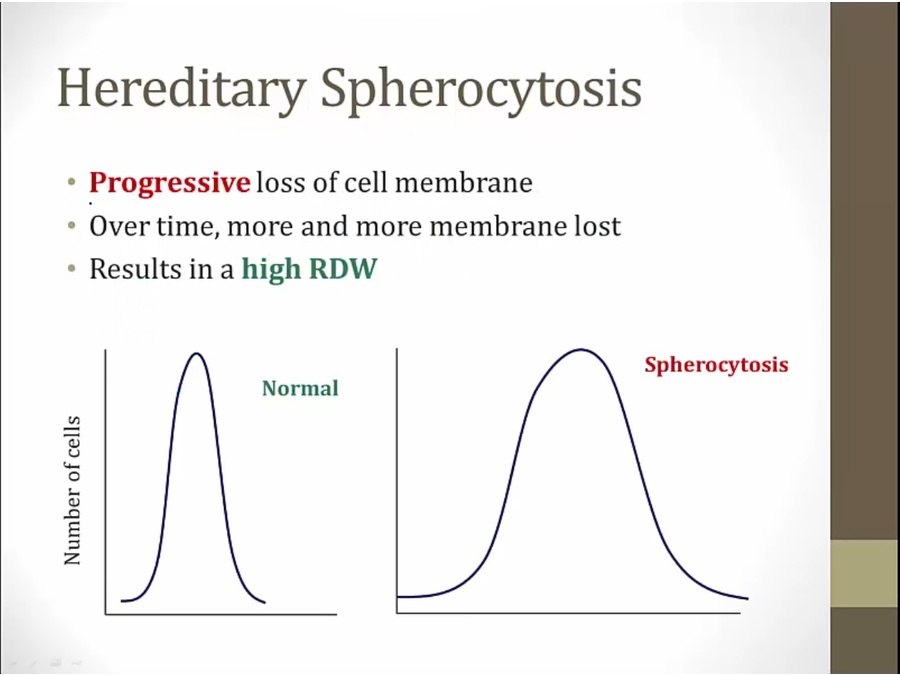
- progressive loss of cell membrane as RBC circulate in vasculature
- RDW: red cell distribution width
- normally: narrow, some small/large cells. Most are in middle
- Spherocytosis: large spectrum of RBC sizes
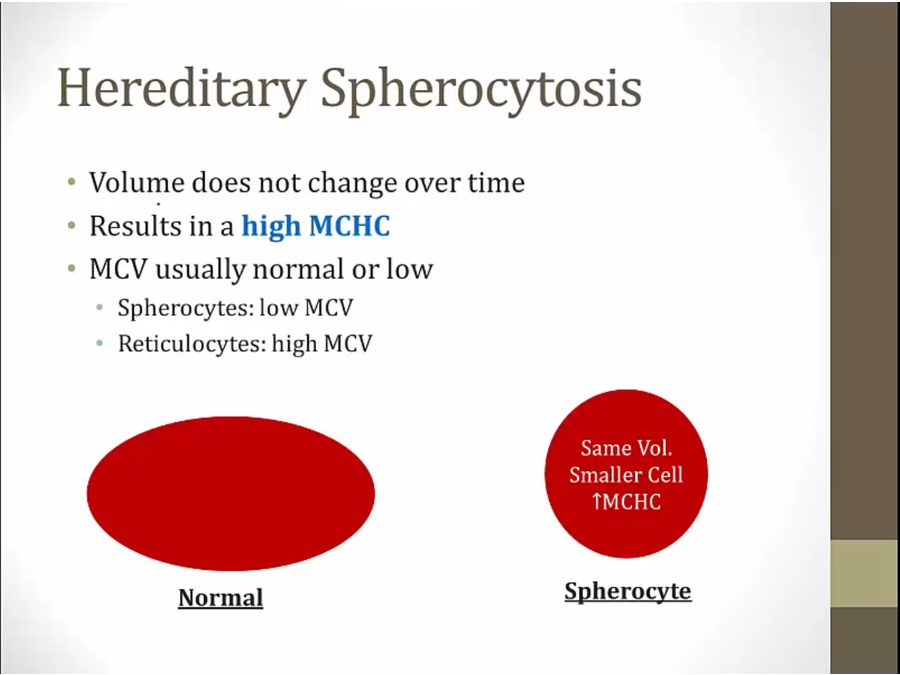
- material density goes up
- MCHC: mean corpuscular hemoglobin concentration
- MCV: mean corpuscular volume: average size of RBCs
- chronic hemolysis: more reticulocytes, high MCV
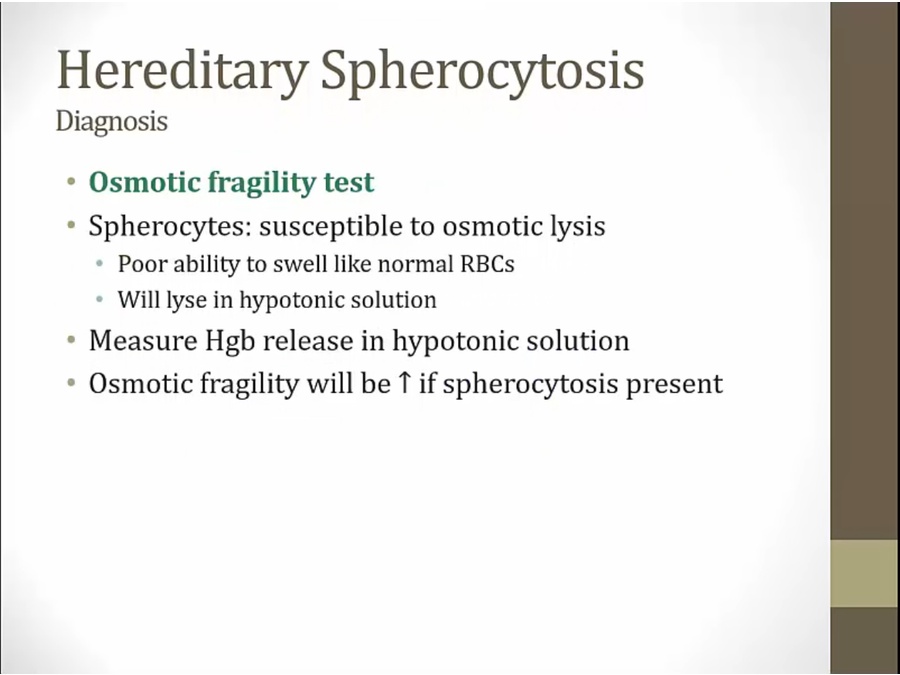
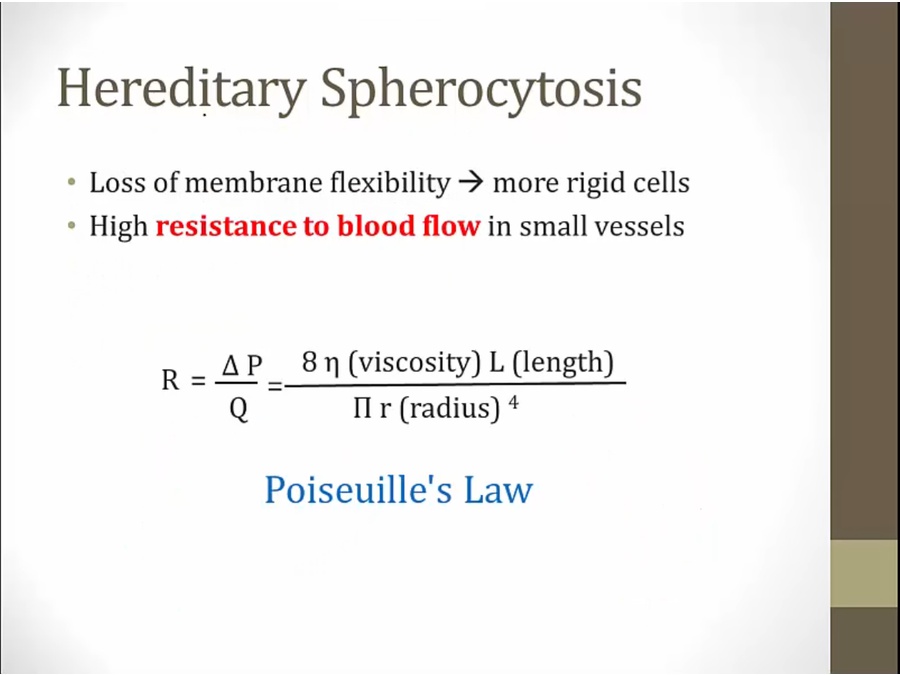
- viscosity of blood go up with rigid cells
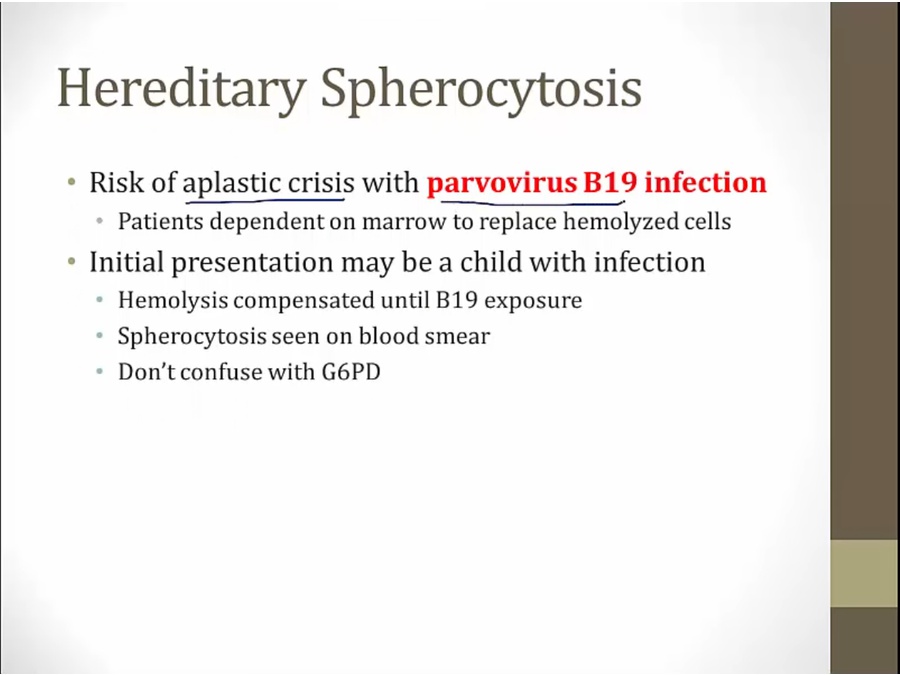
- no spherocytes in G6PD with infection

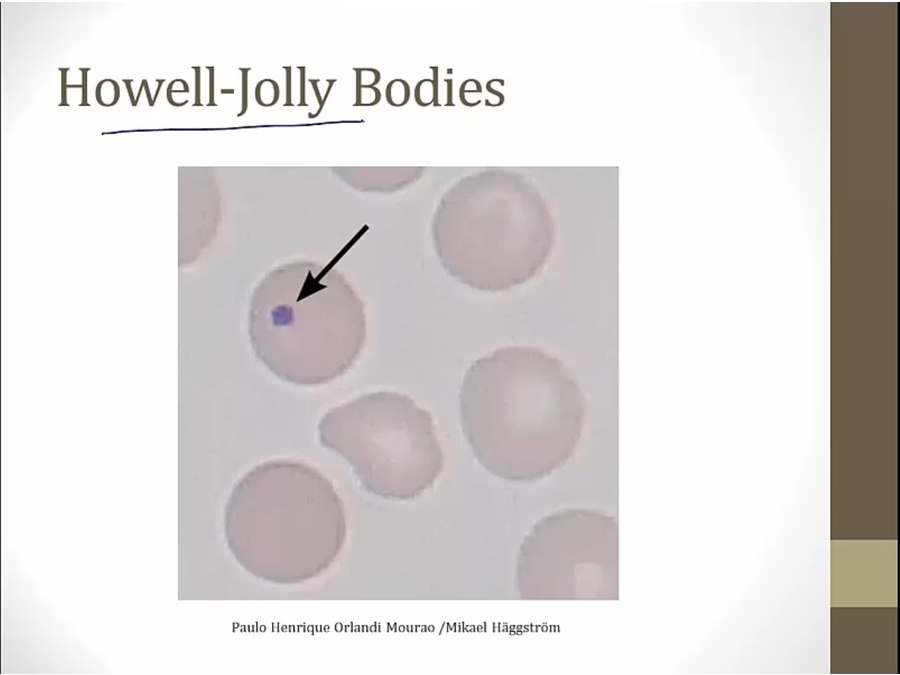
Links to this note





























